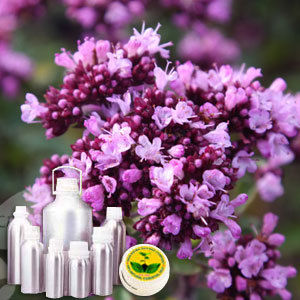Botonical Name | : | Origanum majorana | |
CAS # | : | 8015-01-8 | |
Country of Origin | : | Egypt | |
Color & Odor | : | Pale yellow to orange clear liquid with spicy odor | |
Solubility | : | Soluble in alcohol and oils, insoluble in water | |
Specific Gravity | : | 0.8600 – 0.9050 @20°C | |
Optical Rotation | : | +14° to +24°@ 20°C | |
Refractive Index | : | 1.4550 to 1.4800 @ 20°C | |
Flash Point | : | >100°C | |
Plant Part Used | : | Herb & Leaves | |
Extraction Method | : | Steam Distillation |
DESCRIPTION:
Marjoram oil has a warm, slightly spicy smell and is colorless to pale yellow/amber in color. This tender bushy perennial herb, about 60cm (24 in) high, has a hairy stem, dark green oval leaves and small white or pink flowers.CONSTITUENTS:
The main chemical constituents are sabinene, a-terpinene, y-terpinene, p-cymene, terpinolene, linalool, cis-sabinene hydrate, linalyl acetate, terpinen-4-ol and y-terpineol.AROMATIC SUMMARY / NOTE / STRENGTH OF AROMA:
A middle note with a medium aroma, it has a warm and spicy aroma, with a note like nutmeg.BLENDS WITH:
Although essential oils blend well with one another, marjoram oil blends particularly well with lavender, cypress, cedarwood, chamomile, bergamot, eucalyptus and tea tree.COMMON NAMES:
Sweet marjoram oil ( Origanum marjorana ). USES:
Marjoram has been used as a folk remedy, culinary herb, fragrance and medicine. It is also used as an analgesic and anti-spasmodic and also been used traditionally treat depression. The oil is used as an external application for sprains, bruises, stiff and paralytic limb. The oil finds application in all aspects of our lives such as pain-relief, beauty care, and cooking.


































